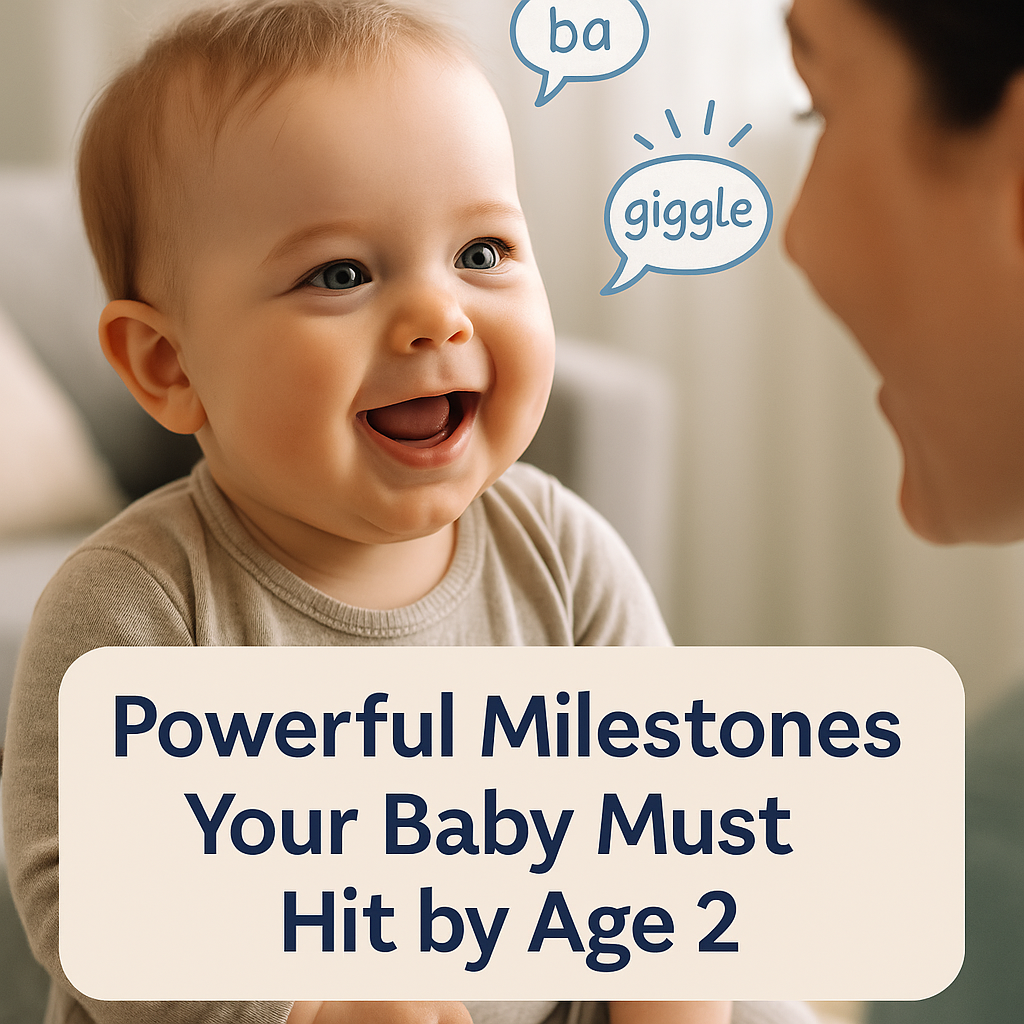Wondering if your baby is on track with talking or responding to sounds? You’re not alone—and you’re not behind. In this guide, we’ll explore key communication milestones your baby should reach by 6, 12, and 24 months, backed by experts and science.
Why Early Communication Matters
Communication is more than words. From babbles to gestures, every coo builds your baby’s social, emotional, and brain development. According to the American Academy of Pediatrics (AAP), early language skills are strong predictors of reading and academic success.
???? Communication Skills by 6 Months
By 6 months, babies are already little conversationalists—even if they don’t speak yet.
???? What to Expect:
- Turns to voices or sounds
- Coos and babbles (especially when spoken to)
- Laughs and squeals with delight
- Shows excitement or distress through tone and expression
???? Tip: Chat with your baby often. Narrate diaper changes or meals to build word exposure.
????️ What to Expect by 12 Months
The 1-year mark is big for communication! You may start hearing real words (or close approximations).
???? Common 12-Month Milestones:
- Says “mama” or “dada” meaningfully
- Uses gestures like pointing or waving
- Understands simple words (“no,” “bye-bye”)
- Looks at objects you name
✨ According to the CDC’s Developmental Milestones, most babies say at least one word by 12 months.
Milestones by 24 Months
At age two, toddlers start combining words and expressing ideas.
By 24 Months, Your Baby Should:
- Say 50+ words
- Combine 2–3 words (“want juice”)
- Point to body parts when named
- Follow simple two-step directions
???? Red flag: If your toddler isn’t saying at least 15 words by 18 months or combining words by 24 months, talk to your pediatrician or a speech therapist.
How Can You Support Baby’s Language?
Here’s what experts suggest to build strong communication:
- Talk constantly—describe what you’re doing or what the baby is seeing.
- Read together daily—babies love repetition and rhythm.
- Sing nursery rhymes—songs help with rhythm and word patterns.
- Use gestures—reinforce words with hand motions.
- Respond to baby’s sounds—conversations start with coos.
???? Watch this video by Pathways.org showing 6 key communication milestones with real babies!
???? When to Be Concerned
If your baby:
- Doesn’t respond to sounds by 6 months
- Hasn’t said a word by 12–15 months
- Doesn’t make eye contact or follow gestures
- Is losing communication skills they previously had
???? Don’t wait. Early intervention matters. Visit CDC’s “Learn the Signs” page for free screening tools.
Key Takeaways
- Every baby develops at their own pace, but there are general markers to expect.
- Communication starts well before speaking.
- Daily interaction—not perfection—builds strong language skills.
- Don’t ignore your instincts. Seek help early if concerned.
Related Articles You’ll Love
- How Nursery Rhymes Boost Baby’s Brain and Language
- What to Expect From Your 2-Year-Old’s Social Development
- When Should I Worry About My Baby’s Speech Delay?
FAQ (Frequently Asked Questions)
What is the first sign of communication in babies?
Babies first communicate through eye contact, cooing, and facial expressions. Smiling back or turning to your voice are early signs.
How many words should my 1-year-old say?
Most 12-month-olds say 1–3 simple words, such as “mama,” “dada,” or “uh-oh.”
Is it normal for a 2-year-old not to talk?
It’s common to have a slight delay, but not speaking 15–20 words by 24 months may require evaluation.
Do bilingual homes cause speech delays?
No. Bilingualism doesn’t delay language—it may even enhance cognitive flexibility.
